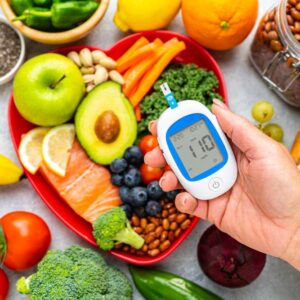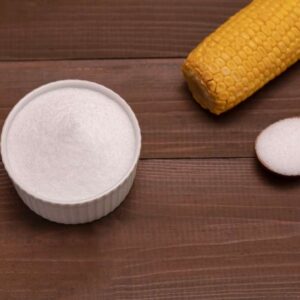
The One Supplement You Need to Take After a Heart Attack
- Discover how this powerful fatty acid is changing the heart attack recovery game
- “There’s no way” you can get what your heart needs through diet. Find out more…
- Two things you need to look for when selecting this healing supplement.
Dear Living Well Daily Reader,
“I can’t wait to take this stupid vest off… but I’m also pretty scared to. What if my heart never heals? What if I have to wear this uncomfortable and restricting vest for the rest of my life?”
This year, my uncle suffered a very serious heart attack. After the initial shock of the event, he had to face the terrifying reality that he would only regain 30 percent of his heart function, even after triple bypass heart surgery.
In fact, his heart was in such bad shape he had to wear a vest equipped with a defibrillator three months after his surgery. This special vest would detect any abnormal heart rhythms and then shock his heart back into normal function. During this time, he experienced several warnings and a few shocks — meaning his heart was struggling to heal.
After he was released from the vest, his cardiologist gave him the same ol’ heart advice they give everyone else — watch your fat intake, cholesterol is the devil, don’t smoke, etc.
But what they didn’t tell him is that there’s a type of fat that could help heal his heart and may even improve his heart functions — one that may have reassured him he could recover from this horrifying health experience.
![]() Fish Oil Heals
Fish Oil Heals
Brand-new research published in the journal Circulation shows that taking omega-3 fatty acid supplements after a heart attack may help the heart heal itself and restore some heart function.
Omega-3 fatty acids are present in some food sources like eggs, fish, grass-fed beef and flaxseeds. However, since it’s difficult to eat enough food to get a high dose, scientists running this study chose to use omega-3-rich fish oil supplements.
Three hundred and sixty people who suffered a recent heart attack participated in the study. They were randomly divided into two groups. Those in the omega-3 group took four one-gram capsules of fish oil daily. The placebo group was given corn oil (hope it wasn’t GMO).
All participants had cardiac magnetic resonance imaging (MRI) both before starting the fish oil or placebos and after six months of treatment. In addition, both groups received lifestyle counseling and were medically monitored during this period, and blood tests were taken to confirm patients in the omega-3 group were treatment compliant.
At the end of the six months, the fish oil group had less thickening and scarring of the heart muscle in the location of the heart attack compared with the placebo group. And the research showed that their hearts were pumping more efficiently.
Reducing scar tissue and improving the heart’s ability to pump blood is vital to the recovery of patients who recently suffered a heart attack, according to Dr. Raymond Y. Kwong, director of cardiac magnetic resonance imaging at Brigham and Women’s Hospital and the lead researcher in the study. He explains further:
The initial insult of a heart attack will damage a part of the heart muscle, which dies, so the rest of the heart muscle has to work extra hard. The heart pump function is weaker and scar tissue develops, and over time these two processes can lead to heart failure.
Another benefit omega-3 offers is reducing inflammation. The researchers observed reductions in biomarkers that indicate inflammation during the study as well. When you couple that with omega-3’s ability to reduce scarring and increase heart function, it’s no wonder that omega-3 is a go-to for anyone wanting to help protect their heart.
Plus, Dr. Kwon reports, “Our findings show that omega-3 fatty acids are a safe and effective treatment in improving cardiac remodeling, so it may be promising in reducing the incidence of heart failure or death, which are still major health care burdens to patients who suffer a heart attack.”
As the results show, it seems logical that getting a daily dose of omega-3 would help ensure your heart health, whether you’ve experienced a heart attack or not.
![]() You Can’t Just Eat Your Omega-3
You Can’t Just Eat Your Omega-3
But there’s just one problem. Dr. Kwon says “there’s no way” to eat enough fish or other omega-3-rich foods to get the same amount of omega-3 in this trial. That’s why it’s so important to make sure you’re getting a healthy dose every day.
Currently, most insurance providers don’t cover fish oil supplements. That may change in the future if studies like this keep popping up.
In the meantime, it’s easy to supplement your omega-3 intake with a high-quality fish oil. Here are two things to look for to ensure you’re getting a quality product:
Purity: Many fish oil sources can contain heavy metals and dangerous chemicals including PCBs, dioxins and mercury. Because of this, many manufacturers use a process called molecular distillation to remove toxins from the oil. If this process is done correctly, it should remove the toxins. However, some manufacturers don’t use this proccess. In order to double-check your fish oil is free of toxins always ask the manufacturer for a certificate of analysis (COA).
Freshness: Some fish oils are rancid. One good way to check this is through the COA. Look for the “peroxide value,” which is a measure of rancidity reactions. This level should be less than 5 meq/kg. If a COA isn’t available, reach out to the manufacturer and ask to see the testing.
My uncle’s 63rd birthday is next week. I’ll be sending him a giant bottle of fish oil supplements. While it’s not a defibrillating vest, it might be the thing that helps heal his heart.
Live well,

Natalie Moore
Managing editor, Living Well Daily
Sources
[1] Omega-3 fatty acids from fish oil, may aid healing after heart attack
[2] Omega-3 fatty acids may aid heart attack healing
Written By Natalie Moore
Natalie Moore is a dedicated health researcher with a passion for finding healthy, natural, and science-based solutions. After a decade of direct healthcare experience in western and natural medicine, she was involved in public health research before joining Living Well Daily.
View More Free Articles
This Sleep Mistake Is Doubling Your Disease Risk
Think your inconsistent bedtime is just a harmless habit? Think again. New research reveals that going to bed at different times each night isn’t just making you tired—it could be dramatically increasing your risk of serious diseases. But the key to making sure poor sleep doesn’t derail your health goals likely isn’t what you think…....
Stop Obsessing Over Diet Trends
Can we stop with the endless diet debates already? Every other week there’s a new headline shouting about which diet is best for weight loss, heart health, or diabetes. Paleo, keto, low-carb, high-protein… it’s exhausting. And now, a new meta-analysis is out comparing the Mediterranean diet, the DASH diet, and something called AHEI (that’s “Alternative...
A New Reason to Ditch Processed Junk
If you’ve ever walked the inside aisles of your local grocery store and thought, “This is all just junk,” your instincts were spot on. A new study published in the journal Thorax just added another red flag to the list of dangers linked to ultra-processed food—a 41 percent higher risk of lung cancer. That’s right....
When Being Winded on Stairs Is Serious (And When It Isn’t)
I had an athlete visit me recently because he experienced shortness of breath while climbing stairs. He is in great shape, so he was worried about what it might mean. “Doc,” he said, “I run five miles three times a week. Why am I huffing and puffing after two flights of stairs?” His concern is...
Study EXPOSES Hidden Danger Lurking in Your Car
We think of our homes and cars as safe havens. But according to a startling new study, they may be flooding your lungs with microscopic plastic particles—every single day. Researchers in France recently found that adults inhale an average of 68,000 microplastic particles daily from indoor air alone. To put that in perspective, that’s about...
Mailbag: Is Modern Food Making You Snore?
“What can cause snoring, and is there a way to correct this issue?” —Seeking Silence Hi Seeking, Snoring happens when the soft tissues in your throat relax and vibrate as air passes through during sleep. While several factors can cause snoring—from sleep position to nasal congestion—I want to share one trigger that might surprise you....
Simple Food Swap SLASHES Dementia Risk 28%
Let’s be honest… who would jump at the chance to cut their dementia risk by 28 percent. And no, you don’t need to run marathons, survive on broccoli, or learn to play the zither (whatever that is) to make it happen. All it takes is one easy swap—something that’s probably already in your refrigerator. Researchers...
This SMART Floss Exposes Hidden Health Danger
Scientists have created dental floss that doesn’t just clean between your teeth—it also tracks your stress while you’re flossing. Now, I know what you’re thinking… “Great—now even flossing is going to stress me out by telling me how stressed I am.” But this fascinating new tool from Tufts University could be a game-changer for understanding...
Is This "Safe" Sweetener Damaging Your Brain?
The headlines are alarming… “Popular Sugar Substitute Linked to Brain Cell Damage” and “Erythritol Could Damage Critical Brain Barrier” are just two of the dozens I’ve spotted recently. But before you toss every sugar-free product in your pantry, let’s take a closer look at what this study actually shows—and what it doesn’t. The latest research...
This Summer Threat Could SPIKE Your Blood Sugar
Picture this… It’s another scorching hot summer day. You crank up the air conditioning while watching the weather forecast, which predicts yet another “record-breaking” heat wave. It’s starting to feel like just another miserably uncomfortable summer. But what you might not realize is that—if you have diabetes—those rising temps could do far more damage to...









